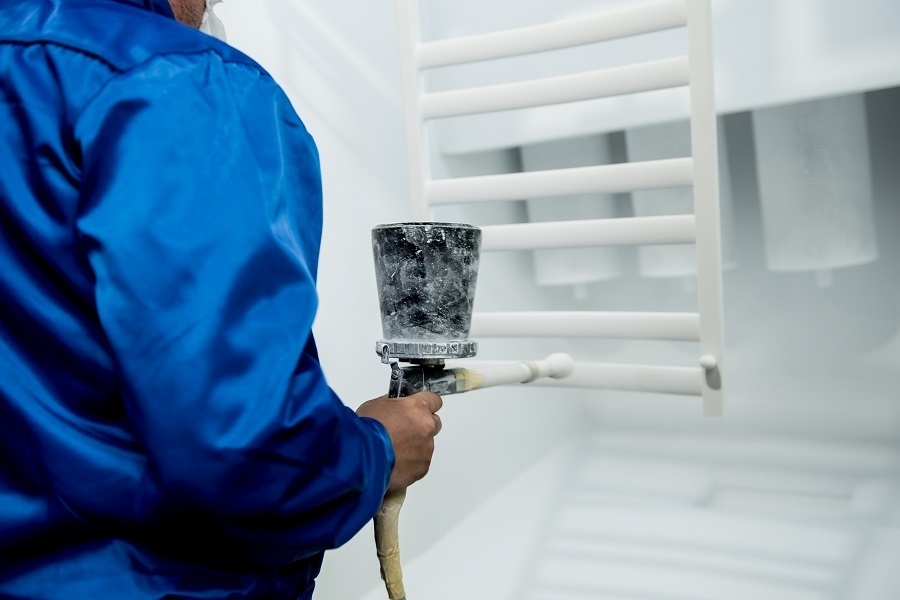Last updated on
Follow these tips to maintain and protect metal objects in your household and extend their lifespan. Read on!
You can use copper, iron, tin, aluminum, and other metals in a variety of applications. Almost every home has fences, stairwells, windows, gates, radiators, and other metal-based objects. As a result of atmospheric factors, it is common for poorly protected or entirely unprotected surfaces to lose their original appearance or deteriorate.
Disintegration can be avoided or at least controlled with effective protection, extending the life of a product. Only a well-maintained surface and a carefully chosen coating technique can provide long-term protection.
To help you prolong the lifespan of some of your metal belongings, we’ve put up some basic instructions for preparing and painting metal surfaces.
What's Inside
Corrosion Explained

Corrosion is a hazardous and expensive atmospheric side-effect. Structures can collapse as a result of it, oil pipelines can burst, chemical facilities can leak, and restrooms can flood. Corroded electrical contacts can cause fires and create other issues, corroded medical implants can cause blood poisoning, and polluted air has corroded works of art all around the world.
Take the Statue of Liberty for example, which is made entirely out of metal. It appears to be durable and long-lasting. It, like nearly all metal pieces, can become unstable and degrade as it combines with substances in its surroundings. The greenish patina that protects the metal beneath the statue’s copper shell from weather deterioration is an example of how corrosion may be helpful. Corrosion inside the statue, on the other hand, has caused significant damage over time.
The majority of metals oxidize quickly, losing electrons to oxygen in the air or water. When oxygen is reduced, it reacts with the metal to generate an oxide. Galvanic corrosion occurs when different types of metal come into touch with one another and undergo reduction and oxidation. But, worry not, because there are corrosion resistant spray coatings that can save any of your metal structures that are exposed to air and water and prone to quick damage.
How to Protect Metal Objects from Corrosion

Use a Preventative Coating
Preventive coating in the form of painters, oils, and sprays is widely available for purchase these days. However, using corrosion-resistant sprays can be the best option for the long-term management of corrosion. You can use primer paint as an initial layer on galvanized roofing and then a latex or acrylic paint as a final coat.
Galvanizing
Galvanizing is a rust-prevention technique. Hot-dip galvanizing or electroplating is used to achieve this – a thin layer of zinc is applied to the iron or steel workpiece, serving as a sacrificial metal, preventing oxygen and water from accessing the metal beneath. Because zinc is more reactive than other metals, it oxidizes faster than iron objects.
Corten or Weathering Steel
Weathering steel, commonly known as “COR-TEN” steel, includes up to 21% intermetallic compounds such as chromium, copper, nickel, and phosphorous. The elements develop a protective rust coating that slows the rate of corrosion over time. COR-TEN steel is less expensive than the more widely used stainless steel.
Stainless Steel
Stainless steel is an alloy with a minimum of 11% chromium content. This permits a protective layer of chromium oxide to develop, which functions as a rust barrier. If the protective coating is damaged, it will re-form. The inclusion of nickel can improve corrosion resistance even more.
Extend the Lifespan of Metal Pieces

Maintenance on a Regular Basis
Routine maintenance will help to prevent rust from developing and slow down the progression of any corrosion that has already formed. It’s critical to get rid of any rusting that has developed. For small regions, a razor blade or a scalpel can be utilized. Surface filth should ideally be cleaned with warm water and soap and the surface coated with a rust-resistant coating.
Coating with Powder
Powder coating is the process of evenly applying a dry powder to a clean metal surface. First, the metal is heated, which transforms the powder into a thin coating. Professionals use the electrostatic spray method to apply powders.
Using an organic layer that establishes a barrier from corrosive substances is a cost-effective technique to guard against rust. Oil-based coatings are excellent solutions for preventing water and oxygen penetration. These coverings are great for the environment as they are organic, but may last less than the other ones. If you can, avoid any close contact with these materials.
The Takeaway
Rust is a serious issue that affects metal-based products such as automobiles, machinery, equipment, appliances, devices, gadgets, jewelry, coins, and decorations. You must understand the physics underlying rust prevention to keep your belongings rust-free. Allowing rust to develop might lead to the loss of your metal collections and equipment.




